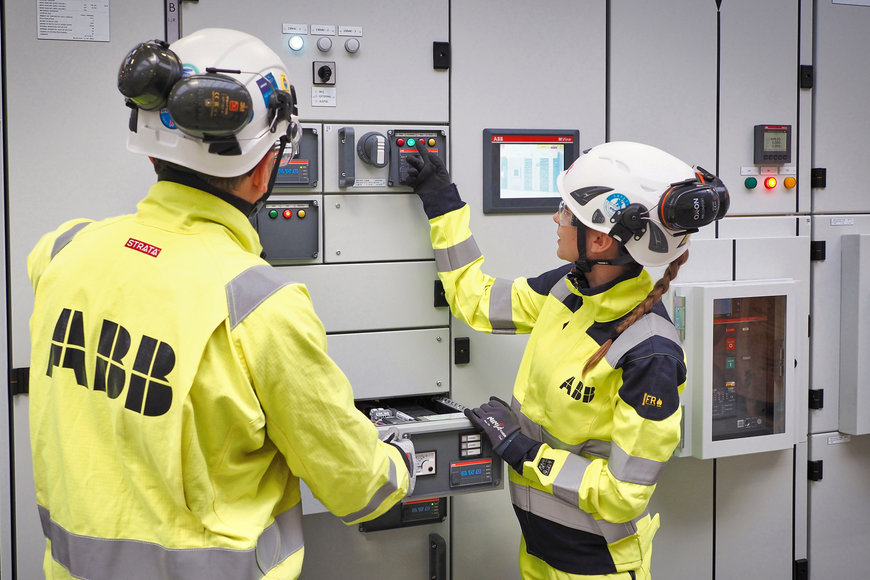Innovative energy efficient equipment translates into energy savings and a reduction in environmental impact to help us fight climate change.
Sustainability is becoming increasingly important across all industries as companies strive to balance economic success with long-term values that take measures to support the effort against climate change and ensure social progress to the benefit of all stakeholders.
This quest for sustainability has brought about the need for companies to evaluate and change the way they think about a wide range of activities, including how to manufacture their products, and how to optimize processes and their business models. One of the keys to make progress in this area is innovation.
Saving energy helps mitigate climate change

Across all industries sustainability objectives are put in place to progressively increase the efficiency of operations, with ambitious targets set to significantly reduce greenhouse gas emissions. To meet the targets all parts of the operations must contribute and carefully review all opportunities to reduce energy consumption.
It was never really considered as a realistic possibility that low-voltage switchgear designs could also contribute to these objectives. However, as switchgear generate heat, the electrical room requires conditioning to maintain the required ambient temperatures.
Take for example an e-House (electrical house), which houses low-voltage switchgear for an industrial process that runs 24/7. Maintaining the switchgear room temperature is key to the equipment performance, but also to ensure the guaranteed lifetime of all the components inside the switchgear. This requires a properly sized conditioning system to be installed, which in some locations might have to run every day of the year, every hour of the day. It is clear that the smaller the room is and the less heat the switchgear in it generates, less energy will be required for the conditioning systems.
ABB’s new switchgear NeoGear can significantly contribute to reducing the carbon footprint, simply thanks to the physical behaviour of laminated bus plate technology. Traditional busbar systems generate heat due to AC-losses caused by the skin-effect in the copper bars. The absence of these AC-losses in laminated technology reduces the overall switchgear heat contribution by up to 30 percent. An additional contribution to more sustainable operations comes from a reduction in the energy required for room conditioning systems. The reduced heat contribution from NeoGear in an electrical room, in combination with smaller eHouses (less volume to cool), significantly reduces the amount of energy required for conditioning.
Sustainable space utilization
Effective space utilization for electrical equipment is not only a key driver in industries like Upstream Oil and Gas or Data Centers. In many other industries space utilization determines the optimum allocation of the available CAPEX budget.

Over the past decades low-voltage switchgear has transformed from large fully open type of installations to today’s fully enclosed, compact, modular type. This progress came with significant improvements in safety and availability of the switchgear. However, the continuous effort to reduce switchgear footprint tended to come with a disadvantage: less space for electrical components, more difficult wiring and cable terminations and reduced rating. What may be visually perceived as available open module space in a switchgear line-up might not always be available, due to limits of thermal performance or maximum currents per section.
With the introduction of laminated bus plate technology it has finally become possible to reduce footprint of switchgear, yet maintain the space needed for the equipment and still offer maximum rating. Equal performances were not possible without forced ventilation until the introduction of switchgear with laminated bus plate technology. Thanks to this innovative technology solution, the switchgear can be up to 25 percent shorter in length and yet still allow up to 30 percent higher maximum permissible watt loss per section – all while providing the same ease of access for cabling and termination.
Innovation breeds sustainability

When creating new products, research and development teams can advocate and design products that minimize energy consumption. Technological innovations that lead to more energy efficient equipment translates into energy savings and a reduction in environmental impact to help us fight climate change. In all ways imaginable, companies in all industries must continue to push the boundaries to ensure smarter, more sustainable products and ways of working.
About NeoGear
ABB introduced laminated bus plate technology in NeoGear in 2019.
NeoGear offers the opportunity to reduce the size of the low-voltage switch room, eHouses or converted containers, which results in cost-savings. NeoGear is also suitable for refurbishment projects and it allows electrical installations to be made in the same already existing space.

About the Author
Ronald van Leeuwen
He is a Global Product Manager for IEC low-voltage switchgear. He joined ABB more than 20 years ago and have had the great opportunity to work in many different areas of ABB low-voltage switchgear business. More recently he was involved in the impressive development of the ABB NeoGear switchgear based on the innovative laminated bus plate technology. His goal is to provide scalable solutions to ABB customers that addresses real pain points in their day-to-day business today but also in the future.
Source: ABB Website